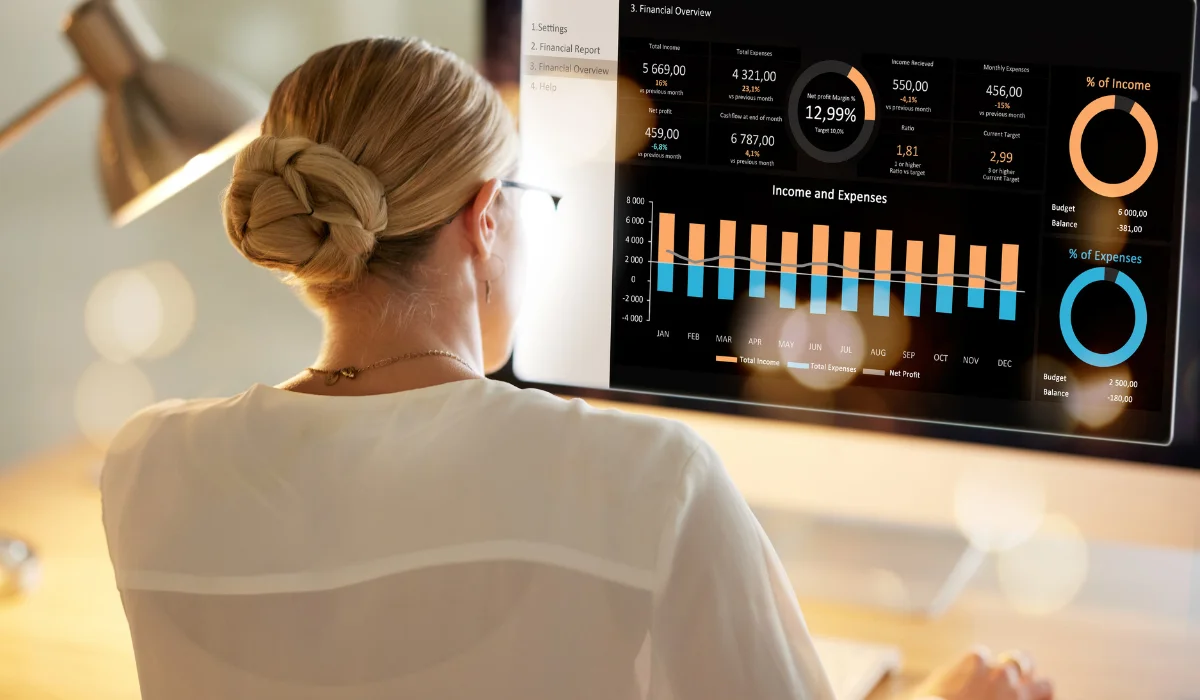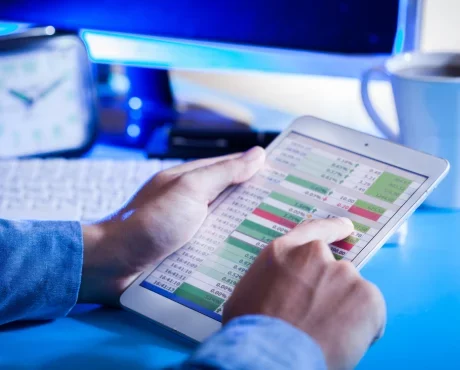Table of Contents
- Why Traditional Cost Estimation Is Becoming Obsolete
- Key Developments Shaping the Future of Digital Estimation
- How Estimation Is Becoming a Cross-Functional Discipline
- Enterprise-Level Benefits from Digital Estimation
- Implementation Considerations
- Looking Ahead: Estimation as a Business Planning Function
- Conclusion
In complex manufacturing environments, cost estimation plays a central role in business viability. It influences pricing, margin control, capital investment, and supplier negotiations. Yet, many enterprise manufacturers still rely on outdated methods to estimate costs in increasingly unpredictable conditions.
These traditional methods no longer align with current operational realities. Global supply chain shifts, price volatility, design variability, and regulatory demands now require faster, more accurate, and more flexible estimation processes.
This blog explores how digital cost estimation is changing, why it’s necessary, and what manufacturers must do to keep up. The focus here is on practical applications rather than theoretical concepts. Every trend covered is tied to a specific operational need or decision-making challenge manufacturers face today.
Why Traditional Cost Estimation Is Becoming Obsolete

Historically, cost estimation was based on stable pricing, standard routings, and averaged supplier data. Estimates were created early in the process and often remained unchanged, even when critical inputs shifted. This approach assumes static market conditions. That assumption no longer holds:
- Material costs can change daily, especially for metals, plastics, and rare minerals.
- Labor availability and cost vary by region and project duration.
- Supplier disruptions, shipping delays, and regulatory shifts affect real-time cost structures.
When estimation models don’t account for these variables, projects are underquoted, profit margins shrink, and cost overruns become routine.
In contrast, digital estimation platforms incorporate live data, respond to real-time inputs, and model various cost scenarios. This leads to more reliable estimates and lowers the likelihood of budget overruns or supply-related disruptions.
Key Developments Shaping the Future of Digital Estimation

1. Real-Time Data Integration
Modern cost estimation tools are connected to ERP, PLM, CAD, and supplier portals. This connectivity allows real-time updates when:
- A bill of materials (BoM) is modified
- Supplier prices or delivery times shift
- A design change affects geometry or tolerance
In the past, estimators had to request and update this data manually. Now, the platform does it continuously. This reduces lag time and ensures that estimates reflect the most up-to-date information available.
2. Role of Predictive Cost Modeling
Data-driven estimation systems now learn from previous project outcomes and evolving market conditions to forecast future costs more precisely. These models can forecast potential cost deviations based on early inputs.
For example:
- If a new product resembles a past project that experienced repeated late-stage design changes, the model can flag similar risks.
- If supplier behavior patterns suggest frequent delays, the platform adjusts lead-time-related cost estimates accordingly.
These capabilities enhance estimation accuracy and enable teams to develop contingency plans in advance of potential issues, thereby improving overall operational efficiency.
3. Design-Integrated Cost Feedback
Engineers are now receiving immediate cost data during the design phase, not after. This is possible through CAD-integrated estimation plugins.
When a designer selects a high-cost alloy or specifies a complex part geometry, the software provides immediate feedback on the impact on overall cost. This allows trade-off decisions based on quantified impact, before the design is finalized.
This approach supports design-to-cost practices, where cost is considered alongside function and performance from the start. It reduces redesign cycles and avoids late-stage reengineering.
4. Scenario Simulation and Cost Sensitivity Analysis
Digital cost estimation platforms now include simulation tools that allow users to test multiple sourcing, design, or production scenarios.
For example:
- Comparing local vs. offshore manufacturing
- Simulating how fluctuations in labor costs, such as a moderate increase, affect overall production expenses
- Testing what happens if a primary supplier becomes unavailable
This enables decision-makers to quantify risk and develop mitigation strategies before
procurement or production commences.
Unlike simple cost variance reporting, scenario modeling enables teams to choose the most resilient and cost-effective option, rather than just the cheapest one.
How Estimation Is Becoming a Cross-Functional Discipline
Modern cost estimation platforms are built to support collaborative workflows. They don’t just serve costing departments, they align stakeholders from engineering, sourcing, operations, and finance.
This alignment is critical for large manufacturers where distributed teams make decisions. Shared access to the same cost models and assumptions reduces errors, speeds up approvals, and ensures consistency across departments.
- Each function views the data relevant to its work:
- Engineers observe the impact of design changes on production costs.
- Procurement sees supplier cost trends and negotiation history.
- Finance sees projected margins and cost-to-serve metrics.
This collaborative setup improves estimated reliability and reduces miscommunication between departments.
Enterprise-Level Benefits from Digital Estimation

When estimation is handled through connected, intelligent platforms, manufacturers realize measurable improvements across business functions. These include:
1. Faster Response Times
Automated data pulls and real-time calculations reduce estimation cycle times. Manufacturers can respond to RFQs more quickly and reduce their time to quote by 40–60%.
2.More Accurate Bids
Estimates built on real-world, current data reduce the risk of underbidding. This protects margins without inflating bids unnecessarily.
3. Better Sourcing Decisions
Integrated costing platforms evaluate supplier options not just by unit price but by landed cost, delivery risk, and capacity availability. This leads to sourcing strategies based on total cost of ownership rather than short-term price.
4. Stronger Forecasting and Budget Control
Estimates feed into planning tools that track variance between planned and actual costs. This creates feedback loops that improve forecasting accuracy and capital allocation over time.
Use Case: A supplier utilized digital simulation to test four alternative die-casting designs, selecting the one that reduced scrap rates by 11%, a win for both cost and quality.
5. Audit Readiness and Traceability
Detailed cost breakdowns are traceable to source data, whether that’s a supplier quote, design drawing, or labor rate. This supports compliance in regulated industries and improves vendor transparency during contract negotiations.
Also Read: ERP Vs Costing Tools: What Manufacturers Should Choose
Implementation Considerations
Shifting to a digital estimation model requires a structured implementation. Key steps include:
- Data Normalization: Source systems (ERP, CAD, PLM) often have inconsistent formats. Establishing data governance and standard structures is essential before integration.
- Platform Selection: Choose tools that integrate natively with your existing tech stack and support modular adoption. Avoid systems that require full replacement of legacy tools unless justified by a business case.
- Training and Role Definition: Cross-functional teams should receive tailored training. Define clear ownership for the creation, review, and approval of estimates.
- Change Management: Engage senior stakeholders from the outset and establish clear criteria to track rollout effectiveness and long-term utilization.
Looking Ahead: Estimation as a Business Planning Function
As estimation platforms mature, their value extends beyond quoting. They become central to:
- CapEx planning (by simulating project costs)
- Make vs. buy decisions (by comparing internal and external process costs)
- Margin analysis (by tracking component- and process-level cost evolution)
- Supply chain resilience (by simulating disruptions and substitutions)
Instead of creating estimates reactively, manufacturers can use the same platforms to make forward-looking investment and design decisions. In this way, estimation evolves from a support function to a core strategic capability.
Conclusion
Manufacturers that continue relying on static, spreadsheet-based estimation models will struggle to stay competitive. Digital cost estimation provides more than speed, it provides adaptability, traceability, and insight across the entire manufacturing lifecycle.
By integrating real-time data, predictive analytics, and collaborative tools, enterprise manufacturers gain the visibility and control they need to reduce risk and protect margins in volatile environments.
The next step isn’t asking if you should modernize cost estimation, it’s identifying which areas to prioritize first and aligning teams to make the transition effective. Connect with Cost It Right experts for more clarity.





